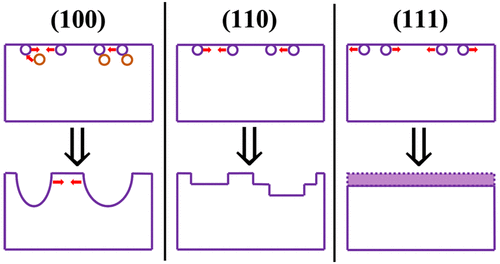当前位置:
X-MOL 学术
›
ACS Energy Lett.
›
论文详情
Our official English website, www.x-mol.net, welcomes your feedback! (Note: you will need to create a separate account there.)
Thermodynamic Analysis of Initial Steps for Void Formation at Lithium/Solid Electrolyte Interphase Interfaces
ACS Energy Letters ( IF 22.0 ) Pub Date : 2022-05-12 , DOI: 10.1021/acsenergylett.2c00550 Victor Venturi 1 , Venkatasubramanian Viswanathan 1, 2
ACS Energy Letters ( IF 22.0 ) Pub Date : 2022-05-12 , DOI: 10.1021/acsenergylett.2c00550 Victor Venturi 1 , Venkatasubramanian Viswanathan 1, 2
Affiliation

|
Lithium metal batteries are a critical piece toward electrifying aviation. For electric aircraft, high discharge power requirements necessitate stripping of lithium metal in a uniform way. Recent studies have identified the evolution of surface voids and pits as a failure mechanism. In this work, using density functional theory calculations and thermodynamic modeling, we investigate the initial step associated with void formation, that is, vacancy congregation, on lithium metal surfaces and interfaces with solid electrolyte interphase (SEI) materials. For isolated lithium slabs, the (111) surface is the least likely to exhibit pitting issues. However, once interfaces with SEI materials are considered, only the (110) lithium facet has the potential of preventing void growth, and exclusively when paired with lithium carbonate. Our work suggests that faceting control during electrodeposition could be a key pathway toward preventing voids and highlights the importance of interface design for optimal battery performance.
中文翻译:

锂/固体电解质界面处空隙形成初始步骤的热力学分析
锂金属电池是实现航空电气化的关键部分。对于电动飞机,高放电功率要求需要以均匀的方式剥离锂金属。最近的研究已将表面空隙和凹坑的演变确定为失效机制。在这项工作中,我们使用密度泛函理论计算和热力学建模,研究了与空位形成相关的初始步骤,即在锂金属表面和与固体电解质界面 (SEI) 材料的界面上的空位聚集。对于孤立的锂板,(111) 表面最不可能出现点蚀问题。然而,一旦考虑与 SEI 材料的界面,只有 (110) 锂面具有防止空隙生长的潜力,并且仅与碳酸锂配对时。
更新日期:2022-05-12
中文翻译:

锂/固体电解质界面处空隙形成初始步骤的热力学分析
锂金属电池是实现航空电气化的关键部分。对于电动飞机,高放电功率要求需要以均匀的方式剥离锂金属。最近的研究已将表面空隙和凹坑的演变确定为失效机制。在这项工作中,我们使用密度泛函理论计算和热力学建模,研究了与空位形成相关的初始步骤,即在锂金属表面和与固体电解质界面 (SEI) 材料的界面上的空位聚集。对于孤立的锂板,(111) 表面最不可能出现点蚀问题。然而,一旦考虑与 SEI 材料的界面,只有 (110) 锂面具有防止空隙生长的潜力,并且仅与碳酸锂配对时。



























 京公网安备 11010802027423号
京公网安备 11010802027423号